The best indoor rebounding systems balance quality, comfort, and durability. Premium options like Bellicon offer customizable bungee cords for joint protection, while JumpSport provides patented arched legs and extensive workout libraries. For smaller spaces, consider foldable models like Fit Bounce Pro II. Your budget will determine options: $300-$1,000+ for premium rebounders lasting 10+ years, or $100-$300 for budget models. The right choice depends on your noise tolerance, space constraints, and fitness goals.
Why Choose Rebounding for Low-Impact Cardio?
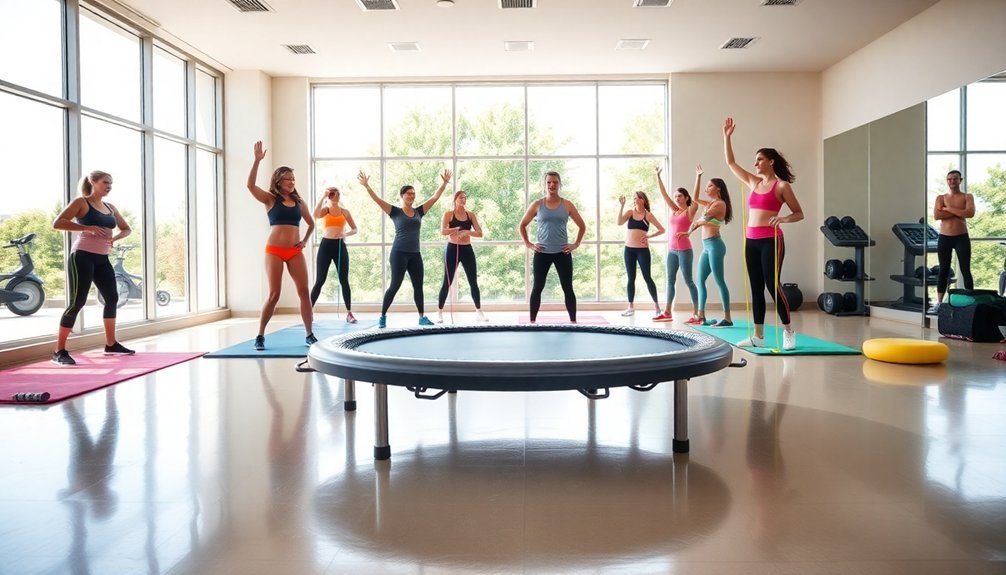
While many fitness enthusiasts gravitate toward high-impact workouts, rebounding offers a compelling alternative that's gentle on your body yet effective for cardiovascular health.
Unlike running, which can stress your joints, rebounding minimizes impact while still elevating your heart rate and improving circulation.
Bounce your way to better heart health without the joint stress that plagues traditional cardio workouts.
Don't mistake low-impact for low-intensity—you'll still get a challenging workout that engages multiple muscle groups, particularly in your legs.
You can easily adjust the intensity by changing your bounce height or speed, making it suitable whether you're recovering from injury or looking for an intense cardio session.
Rebounding also uniquely benefits your lymphatic system, supporting immune function and detoxification.
With minimal equipment required and accessibility for various fitness levels, it's a versatile addition to your exercise routine that won't compromise your joint health. Regular rebounding can significantly enhance your bone density and strength, which is especially beneficial for those concerned about osteoporosis.
Spring vs. Bungee Systems: Which Rebound Technology Is Superior?
When choosing a rebounder, you'll need to decide between spring systems that offer a firmer bounce for stability or bungee models that provide a gentler, quieter experience.
Your selection should factor in performance characteristics like bounce quality and impact absorption, which directly affect your workout effectiveness.
Spring rebounders typically last longer without losing tension, while bungee systems excel in noise reduction—making them ideal if you're exercising in apartments or during early morning sessions. Bungee cord systems like the Bellicon and Boogie Bounce Elite offer superior joint protection by absorbing impact more effectively than traditional springs.
Subheading Discussion Points
Choosing between spring and bungee rebounding systems often comes down to your specific needs and fitness goals. Spring systems offer affordability and portability, making them ideal for budget-conscious users or those with limited space. However, they typically produce more noise and provide less joint protection. High-quality models often feature tapered springs that offer better performance and durability than tube springs.
In contrast, bungee systems deliver superior impact absorption and quieter operation, perfect if you're concerned about joint health or have noise-sensitive living arrangements. While they tend to be more expensive, the comfort and adjustability may justify the investment.
| Feature | Spring Systems | Bungee Systems |
|---|---|---|
| Cost | More affordable | Higher priced |
| Joint Impact | Harsher | Low-impact, cushioned |
| Noise Level | Louder | Quieter operation |
Consider your budget, workout intensity preferences, and environmental constraints when selecting the rebounding technology that's right for you.
Performance and Bounce Quality
The performance and bounce quality of your rebounder will greatly impact your workout experience and results.
Spring rebounders deliver a firmer, faster bounce ideal for high-intensity workouts at tempos up to 130bpm, making them perfect for fitness training and advanced exercisers. They maintain consistent reactivity over time and typically require less maintenance.
In contrast, bungee systems offer a softer, slower bounce that reduces joint strain – an excellent choice if you're a beginner or have knee issues.
While bungee cords may stretch and lose tension eventually, they're quieter and safer for children who might jump improperly.
Your specific needs should guide your choice: springs for fast-paced aerobics and sports training, or bungee for gentle, low-impact workouts.
Some innovative models now offer adjustable tension for a customized bouncing experience.
High-quality spring rebounders provide users with fluid aerobic movements that enhance the effectiveness of your workout routine.
Noise and Durability Factors
As you consider the perfect rebounder for your home workouts, noise levels and durability become essential deciding factors.
Bungee systems operate considerably quieter than their spring counterparts, making them ideal for apartments or early morning routines when you don't want to disturb others.
While spring rebounders typically cost less upfront, they require regular maintenance—including lubrication to prevent squeaking and periodic tightening.
Bungee systems need less maintenance but tend to lose tension faster over time, potentially affecting your workout quality. JumpSport's EnduroLast Elastic Cords have been lab-tested to outperform traditional bungee cords for up to 1.6 million bounces.
Springs generally offer more consistent performance longevity despite their noise issues.
However, if you're concerned about joint impact, bungee systems provide a gentler bounce.
Your choice ultimately depends on whether you prioritize long-term durability or a quieter, low-impact exercise experience.
Top Rated Rebounders for Small Spaces
Living in a compact space doesn't mean you can't enjoy the benefits of rebounding exercise. Several brands offer space-conscious options that combine functionality with portability. Many users prefer models with elastic straps instead of metal springs for safer indoor use, especially when children are using the equipment.
| Brand | Features | Size | Best For |
|---|---|---|---|
| Kanchimi | Foldable design, quiet operation | 40" | Overall value |
| Viavito | Lightweight frame, portable | <40" | Easy storage |
| JumpSport | Durable bungee cords, padded cover | 39"-44" | Long-term use |
| Fit Bounce Pro II | Compact folding, noise reduction | <40" | Apartment living |
When choosing a small-space rebounder, prioritize models with foldable legs that don't require screws for assembly. Look for units that include carry bags for convenient storage and non-slip mats for safety. Most quality compact rebounders feature either elastic bungee cords or quiet springs covered with protective padding.
Premium Rebounders Worth the Investment

Premium rebounders offer superior bounce quality with bungee cord systems that provide smoother, quieter workouts than traditional spring models.
You'll find signature features from top brands like adjustable tension settings, extended mat areas, and extensive digital fitness programs that justify their higher price points. JumpSport's EnduroLast elastic cords deliver a cushioned, joint-friendly bounce experience that significantly reduces impact during intense workouts.
While these high-end models require a larger initial investment, their durability—often backed by extended warranties—translates to lower cost-per-use over time compared to budget options.
High-End Bounce Quality
When you're serious about rebounding, investing in a high-end system can transform your workout experience entirely. Premium rebounders like Bellicon and JumpSport feature sophisticated bungee systems that deliver a smooth, consistent bounce while minimizing joint impact.
| Feature | Benefit |
|---|---|
| Bungee Spring Systems | Comfortable, customizable bounce experience |
| Adjustable Firmness | Tailored resistance for different workout styles |
| Enhanced Durability | Long-term performance without degradation |
| Quiet Operation | Distraction-free workouts at any time |
The quality difference is immediately noticeable in how these systems respond to your movements. High-end rebounders provide deeper compression and more responsive rebound, engaging your muscles more effectively. JumpSport's PRO models offer extra firm bounce options that are ideal for intensive cardio workouts. You'll feel the difference in workout efficiency and reduced strain, making premium models worth considering if rebounding is part of your long-term fitness strategy.
Signature Brand Features
The market's leading rebounder brands differentiate themselves through unique features that justify their higher price points.
Leaps and Rebounds offers premium rebounders with quiet bungees that provide smooth, joint-friendly workouts backed by lifetime warranties and high-quality mat covers. Their 48-inch Original Rebounder comes with a stabilizer bar included for enhanced balance and safety during high-intensity exercises.
JumpSport stands out with its patented arched legs and EnduroLast Elastic Cords that deliver a quieter, more comfortable bounce than traditional springs.
Their no-tip frames and extended lay-flat mats enhance safety while allowing for diverse exercise options.
Both brands emphasize customization—JumpSport with adjustable tension settings and Leaps and Rebounds with models supporting up to 270 pounds.
You'll also benefit from extensive support systems, including free workout content, quick assembly (20-30 minutes for Leaps and Rebounds), and risk-free return policies.
Durability Versus Cost
Investing in a high-quality rebounder often raises the question: is it worth paying more upfront for durability? While premium models like Cellerciser and Bellicon range from $300-$1,000+, they offer superior construction and longer lifespans than their $200 counterparts. Metal springs or bungee cords provide different bounce experiences that affect the quality and comfort of your workouts.
| Brand Level | Average Cost | Expected Lifespan |
|---|---|---|
| Premium | $500-$1,000+ | 10+ years |
| Mid-range | $300-$500 | 5-7 years |
| Budget | $100-$300 | 1-3 years |
When you factor in replacement costs and maintenance, cheaper rebounders often cost more long-term. Budget options typically use plastic frames that bend with use, increasing injury risk. Premium models feature steel frames, consistent bounce quality, and extensive warranties—sometimes lifetime guarantees. You'll also enjoy better workout effectiveness and comfort, making the initial investment worthwhile for serious users.
Budget-Friendly Options That Deliver Results
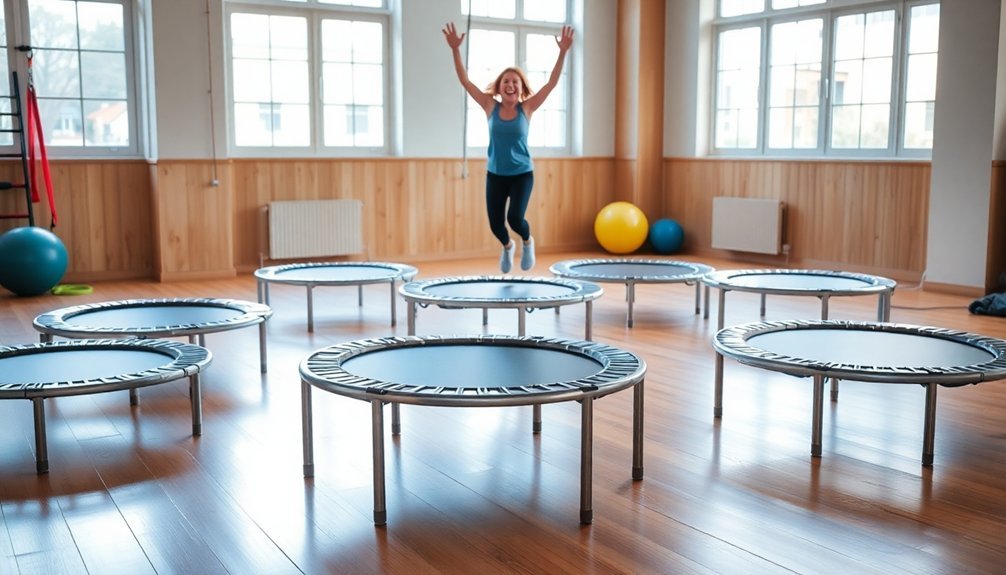
Finding effective rebounding exercise equipment doesn't require emptying your wallet. Brands like BCAN, DICK'S Sporting Goods, and SBFit offer affordable rebounders that provide impressive durability and performance.
JumpSport, typically known for premium options, also features budget-friendly models with 3-piece self-assembly frames.
Don't dismiss JumpSport—they offer affordable rebounders requiring simple assembly while maintaining their reputation for quality.
You'll save money with smaller frame sizes (39" vs. 44") and self-assembly requirements while still enjoying cardiovascular benefits and low-impact workouts. The BCAN Bungee Rebounder, priced between $100 to $150, is an excellent budget-friendly option that's ideal for beginners and provides consistent motion for effective workouts. Many budget options include quiet operation and simple setup—perfect for home use.
Some even integrate with apps like Muuv to guide your workouts.
Compared to gym memberships, these rebounders offer exceptional value while delivering similar health benefits: improved cardiovascular fitness, enhanced coordination, stress reduction, and effective weight loss—all from the convenience of your home.
Key Features to Consider Before Purchasing
Before investing in a rebounding system, understanding the essential features that match your fitness goals can save you from buyer's remorse.
First, consider the bounce system—springs offer durability and longevity, while bungee cords provide a smoother, quieter workout but require more maintenance.
The frame material matters greatly; steel frames deliver superior stability compared to plastic alternatives. Plastic frames should be avoided as they can crack and break, creating potential injury risks during workouts.
Don't overlook mat quality—premium polypropylene materials guarantee better support during your sessions.
If you're tight on space, foldable options with sturdy hinges are practical, while beginners might benefit from models with stability bars.
Your environment also affects your choice. Consider available space, noise tolerance, and whether portability is important.
If you have joint concerns, prioritize systems with adjustable bounce resistance that can accommodate your specific needs.
Weight Capacity and Durability Factors
While selecting your ideal rebounder, weight capacity and durability should top your priority list for both safety and long-term value. Most models support between 225-330 pounds, but always match or exceed your weight requirements when choosing.
Look for these quality indicators to guarantee your investment lasts:
- High-quality construction materials with robust metal frames and non-slip mats
- Spring configuration (traditional springs vs. bungee systems) that supports your weight and exercise style
- Even weight distribution features to prevent premature wear
- Non-marking rubber feet for stability and floor protection
- Warranty coverage and availability of replacement parts
Remember that static load capacity differs from active use ratings. Premium models like the Maximus Pro offer higher weight limits (up to 330 pounds) and reinforced components for heavier users. The Maximus Pro's sturdy design includes a handlebar for stability that helps maintain balance during more intense rebounding workouts.
Folding vs. Fixed Rebounders: Pros and Cons
Choosing between folding and fixed rebounders ultimately depends on your lifestyle needs and available space.
If you're tight on room, folding models offer convenient storage and portability, with quad-fold designs providing the most compact solution. The Quadfold rebounder features a secondary folding mechanism that makes it exceptionally mobile compared to standard folding options.
Fixed rebounders deliver superior stability and durability for intensive workouts. Their rigid construction eliminates the movement that folding hinges might create, resulting in a smoother bounce experience. They're also typically less expensive.
Consider your usage pattern carefully. If you'll frequently move your rebounder or need to store it between sessions, a folding model with adjustable handles might justify the higher cost.
For permanent setups or commercial environments, fixed rebounders excel with their sturdier frames and higher weight capacities.
Noise Levels: Finding a Neighbor-Friendly Rebounder
Noise can become a notable factor when using a rebounder in multi-family housing or shared living spaces. If you're concerned about disturbing others, your rebounder choice matters notably.
- Bungee cord systems (like bellicon and Fit Bounce Pro II) are considerably quieter than metal springs.
- High-quality materials and stable bases minimize unwanted vibrations and rattling.
- Anti-slip rubber pads not only provide safety but also absorb sound during workouts.
- Lubricating metal springs can reduce friction noise if you already own a spring model.
- Larger diameter rebounders with bungee systems offer quieter bouncing despite increased movement.
For apartment dwellers, a bungee rebounder is your best option. Models like HOMCOM and bellicon are specifically designed with noise reduction in mind, making them ideal for shared living environments where maintaining neighbor harmony is essential. Bungee models are often preferred for relaxation and holistic purposes due to their quieter operation compared to metal-sprung alternatives.
Stability Features for Beginners and Seniors
When beginning your rebounding journey, stability becomes an important factor, especially for seniors and those new to this exercise.
Look for rebounders with integrated stability bars that provide vital balance support while you develop confidence.
Bungee-sprung systems offer slower, softer bounces that are easier to manage than traditional spring designs.
Confirm your rebounder weighs over 10 kilograms and stands at least 9 inches tall for ideal stability and performance.
Many quality systems include non-slip surfaces and protective flaps to prevent your feet from slipping through during workouts.
Consider models with handlebars or additional stability accessories if you're particularly concerned about balance.
The best rebounders for beginners also come with instructional materials that teach proper jumping techniques for safety and maximum benefit.
Some premium rebounders feature SoftEdge™ technology that provides exceptional shock absorption during your workout, making them particularly suitable for those with joint concerns.
Best Rebounders With Included Workout Programs
When choosing a rebounder, you'll want to evaluate models that offer video training access for seamless home workouts.
The best systems include extensive libraries with guided workouts spanning from beginner bounces to advanced cardio sequences.
Bellicon and Maximus Pro stand out by providing lifetime access to professionally designed routines that keep your rebounding experience fresh and effective.
Look for rebounders that offer stability bars which can enhance safety during more challenging workout sessions, especially for beginners still developing their balance.
Video Training Access
Investing in a rebounder with included workout programs can transform your fitness experience by eliminating the guesswork from your routine. Most premium rebounders now offer lifetime access to online training videos, giving you incredible long-term value without recurring subscription costs.
Look for systems that provide:
- Structured, instructor-led workouts that guarantee proper technique and maximize results
- Multi-level programs suitable for beginners through advanced users
- Specialized content targeting specific goals like weight loss or cardiovascular health
- Workout varieties that incorporate stability bars and other accessories
- Community support through online forums where you can share experiences
The convenience of accessing these videos anytime means you'll never lack motivation or direction. These programs are particularly beneficial for seniors as they improve balance and coordination, reducing the risk of falls while providing appropriate exercise intensity.
Whether you prefer low-impact aerobics or strength training, having compatible video resources tailored to your specific rebounder model enhances your overall experience and keeps you engaged long-term.
Guided Workout Variety
The right rebounder becomes even more valuable when paired with engaging, structured workouts that target your specific fitness goals.
Top models from brands like Bellicon, MaXimus, and Boogie Bounce include extensive workout programs ranging from basic bounces to complex routines with resistance bands.
Look for systems featuring warm-ups, cardio segments, strength training, and cool-downs. Premium options offer customizable intensity levels suitable for beginners through advanced users. Many include stability bars and adjustable handles to enhance safety while you progress.
The best rebounders integrate workout variety seamlessly—DOMYOS offers beginner-friendly guides, while Viavito's lightweight designs make daily use convenient. The Stamina Mini Fitness Trampoline with its Smart Workout App provides an excellent option for beginners seeking guided routines with progress tracking capabilities.
When selecting your system, prioritize those with structured programs that incorporate music integration to maintain rhythm and motivation throughout your low-impact, high-reward sessions.
Comparing Popular Brands: Bellicon, JumpSport, and More
Selecting the right rebounder requires careful comparison of leading brands that dominate the indoor rebounding market.
While Bellicon offers premium German-engineered models with various bungee strengths, JumpSport stands out with its distinctive arched legs and stability features.
The sophisticated German engineering of Bellicon meets its match in JumpSport's innovative stability design and distinctive arched leg system.
- Bellicon provides multiple diameter options (39"-54") with customizable bungee resistance for different body weights.
- JumpSport's half-fold design and workout video library make it practical for home use.
- Fit Bounce Pro II offers quieter bouncing with its foldable design.
- Budget-conscious shoppers might prefer the Costway Mini Trampoline.
- Your choice between bungee systems (Bellicon, JumpSport) and metal springs (Maximus Pro, Viavito) affects bounce experience.
JumpSport's Pro series includes impressive bounce adjustability with 7 firmness settings that accommodate various workout intensities.
Consider your space constraints, workout preferences, and budget when selecting between these quality options that each deliver different rebounding experiences.
Maintenance Tips to Extend Your Rebounder's Lifespan
To maximize the enjoyment and effectiveness of your indoor rebounding system, proper maintenance becomes essential for preserving its bounce quality and structural integrity.
Regularly clean your rebounder to remove debris and inspect it for wear and tear, paying special attention to the mat for any sagging issues.
Ensure all parts remain secure by checking connections and tightening them as needed. For technical care, apply vaseline to metal springs to reduce noise and prevent rust. Always establish and enforce weight limits to prevent excessive stress on your rebounder components.
Clean the mat with non-caustic products and examine it every few months for fraying.
Don't ignore safety precautions—always verify proper assembly, maintain adequate clearance around your unit, and wear non-slip footwear.
Replace worn parts promptly to maintain both performance and safety throughout your rebounder's lifespan.
Frequently Asked Questions
Can Rebounding Help With Specific Health Conditions Like Osteoporosis?
Rebounding may help with osteoporosis by potentially improving bone density, but it poses fall risks. You'll need stability handles and should consult your doctor first. Consider combining it with proven bone-strengthening exercises for best results.
How Long Should a Beginner Rebound Session Last?
As a beginner, you should start with 10-minute rebounding sessions daily to let your body adjust. You'll want to gradually increase your time as you build stamina and comfort with the exercise.
Can Children Safely Use Adult Rebounders?
Children can safely use adult rebounders but they should be at least 10 years old and always supervised. You'll need to ascertain the rebounder meets weight limits and has adequate safety features like handlebars for balance.
Are Replacement Parts Easy to Find for Most Brands?
Yes, you'll find replacement parts readily available for most rebounder brands. You can order them directly from manufacturers' websites, local distributors, or dedicated spare parts platforms that offer warranties and regional support.
Do Rebounders Require Assembly or Come Pre-Assembled?
Most rebounders require assembly upon purchase, though some smaller models come partially pre-assembled. You'll typically spend 30 minutes to several hours setting up your rebounder, depending on its complexity and bungee attachment requirements.
In Summary
You'll find the perfect rebounder by prioritizing your specific needs. Consider your budget, space limitations, and fitness goals when deciding between spring or bungee systems. Don't forget to check stability features if you're a beginner or senior. Whether you choose Bellicon's premium quality or a budget-friendly option, regular maintenance will keep your indoor rebounding system bouncing effectively for years to come.
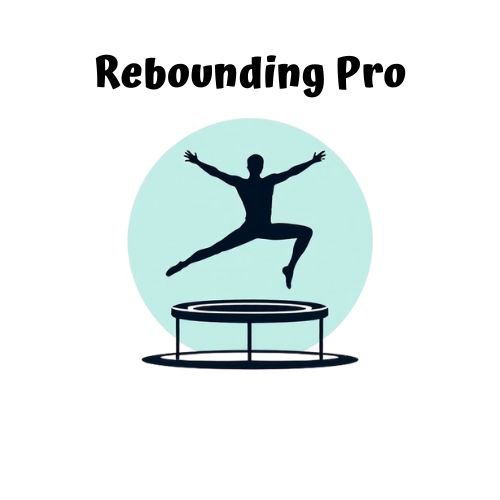
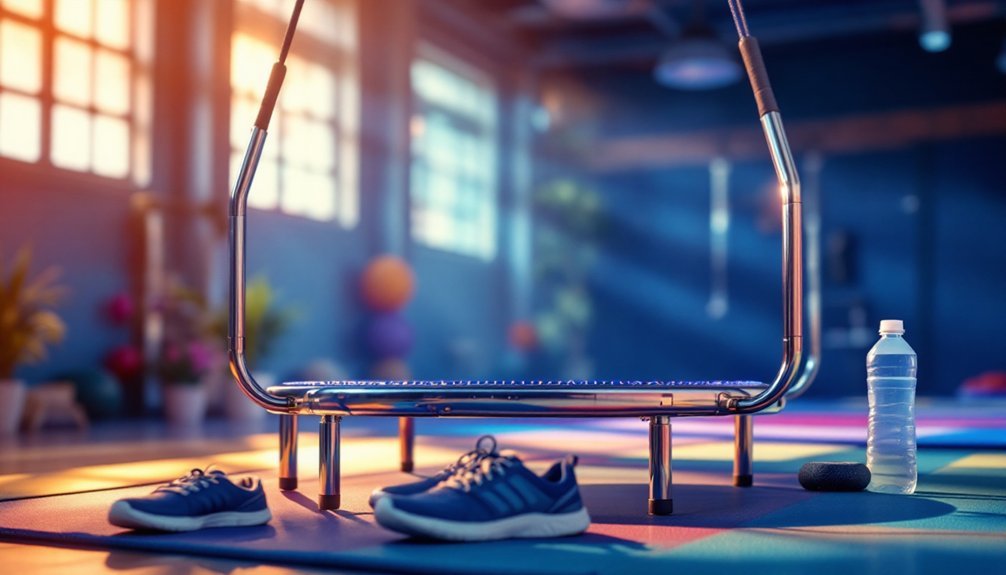

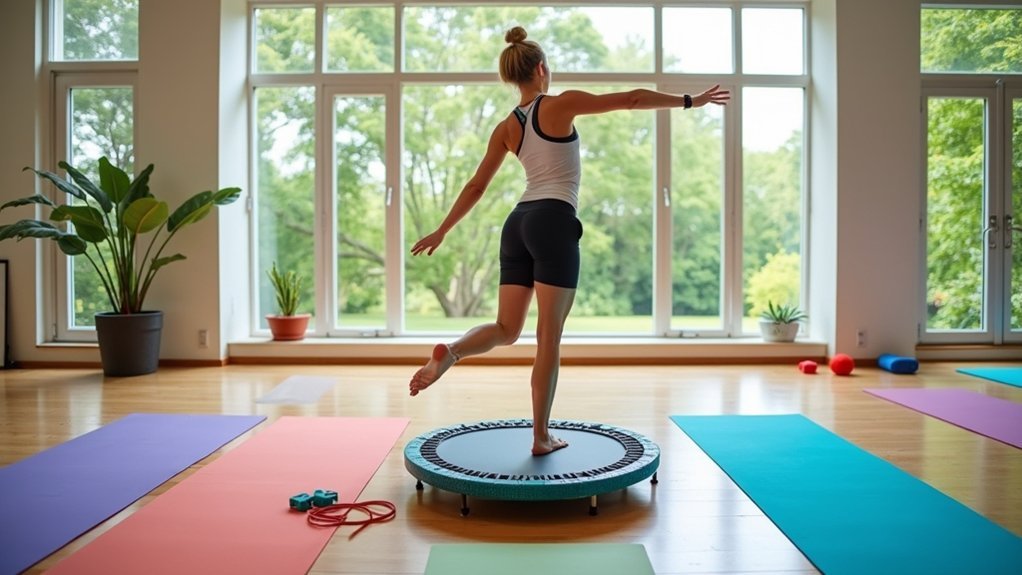

Leave a Reply